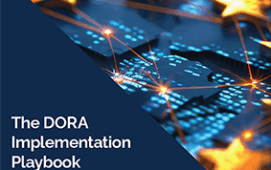OpenGamma has responded to changes in OTC derivatives market structure and rising regulatory demand for advanced risk management with a second version of its open source analytics and risk management platform, OpenGamma Platform 2.0. The platform is available today and builds on the first version of the software that was released in April 2012. It includes enhanced stress testing capabilities, increased support for listed products and credit derivatives, and improved memory and performance.
Platform 2.0 is designed to meet the challenges of transformation in OTC derivatives market structure and regulatory standards in Dodd-Frank, European Market Infrastructure Regulation and Basel III that require updated risk scenarios for stress testing. OpenGamma’s focus on OTC derivatives market structure is also at the heart of further developments to the platform that will be released in the fall.
Mas Nakachi, CEO of OpenGamma, says: “OpenGamma Platform 2.0 is a huge step forward. Its core is still real-time market risk, but we have moved into a new area with support for changes to the OTC derivatives market structure.”
The upgraded software offers support for credit derivative products as well as improved support for high-volume listed futures and options, including foreign exchange and commodities. Enhanced stress testing is achieved using a Groovy script-based stress testing domain specific language that allows more advanced user defined scenarios, while users can employ high-level languages such as R and Matlab to generate more granular outcomes from the risk analytics engine.
Responding to increasing trade volumes as all markets, including OTC derivatives, become electronic, OpenGamma has improved performance and memory management to match the requirements of larger and faster changing portfolios. Underpinning the incremental improvements on the platform is a transition to Java 7 and migration to the build automation tool Maven, which is designed to decrease build time.
The initial platform has attracted towards 10 commercial clients, predominantly hedge funds and proprietary traders, but OpenGamma expects Platform 2.0 to attract additional users as they work to accommodate changes in the OTC derivatives market and meet forthcoming regulation. The software has backward compatibility with version 1.0 and is offered as a free upgrade to existing users and a free download to new users.
Nakachi says: “Industry participants want to move on from closed source software vendors and not be held hostage. They want collaborative partners like OpenGamma and they want access to source code.” Looking forward, OpenGamma expects the growing maturity of the platform to create an ecosystem in the open source community of developers and integration partners.
Subscribe to our newsletter




